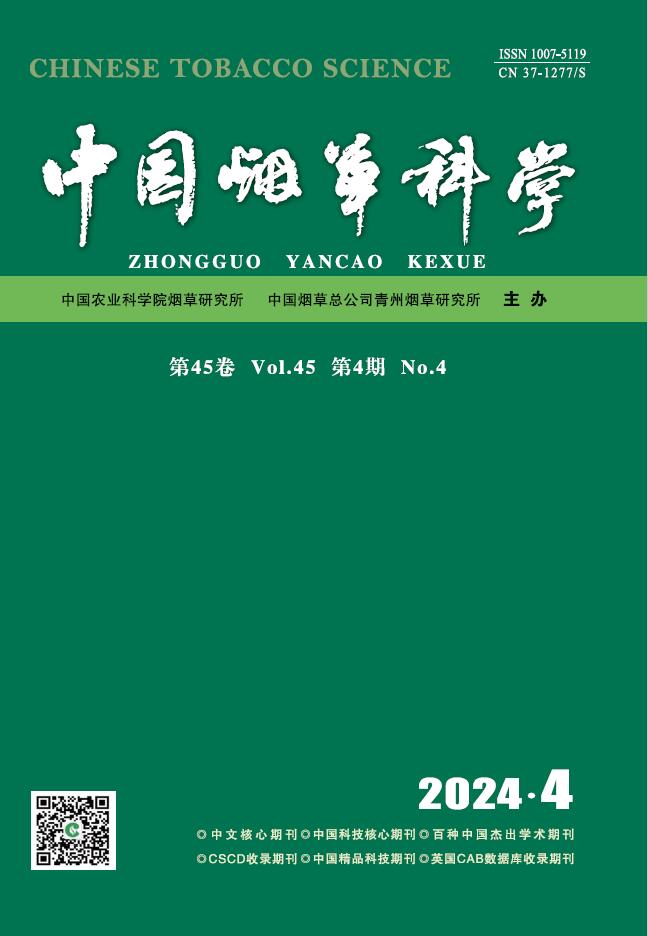RESPONSE OF FLUE-CURED TOBACCO CULTIVARS NC 71 AND NC 72 TO SEED PRIMING: I. LABORATORY EVALUATIONS OF LIGHT AND TEMPERATURE EFFECTS ON GERMINATION RATE AND SYNCHRONY
引用次数: 1
Abstract
Abstract Seed priming is frequently used in the tobacco seed industry to increase seed germination rate and uniformity and to overcome temperature imposed dormancy. However, it is not known if all seedlots respond equally to priming. This research was conducted to evaluate the influence of temperature, light, and priming on two widely-planted flue-cured cultivars. Experiments were conducted in 1999 and 2000 using the flue-cured tobacco cultivars NC 71 and NC 72. For each cultivar and year, primed and non-primed pelleted seeds from the same seed lot were used. Seeds were germinated at constant 20°C, and alternating 30/20°C, 30/15°C, and 23/20°C in both light and dark environments. The days required to reach 90% germination (D90) and a modified index of synchrony (ISM) were determined. In 1999, priming decreased the rate of germination (higher D90) and reduced ISM for NC 71, but had no effect on speed or uniformity of germination of NC 72 compared with non- primed seeds. Germination of primed seeds of both ...烤烟品种nc 71和nc 72对种子激发的响应:i.光照和温度对发芽率和同步性影响的室内评价
种子催熟是烟草制种工业中常用的一种方法,它可以提高烟草种子的发芽率和均匀性,克服温度造成的休眠。然而,尚不清楚是否所有的苗区对启动都有相同的反应。本研究评价了温度、光照和引水对两个广泛种植的烤烟品种的影响。1999年和2000年分别以烤烟品种NC 71和NC 72为试验材料。对于每个品种和年份,分别使用同一种子批次中已处理和未处理的颗粒种子。种子在恒定20°C、30/20°C、30/15°C和23/20°C交替光照和黑暗环境下发芽。测定了达到90%发芽率所需的天数(D90)和改良的同步指数(ISM)。1999年,与未启动种子相比,启动降低了NC 71的发芽率(D90较高)和ISM,但对NC 72的萌发速度和均匀性没有影响。两种种子的发芽率…
本文章由计算机程序翻译,如有差异,请以英文原文为准。
求助全文
约1分钟内获得全文
求助全文
来源期刊

中国烟草科学
烟草
自引率
0.00%
发文量
3722
期刊介绍:
Chinese Tobacco Science is an academic scientific journal (bimonthly) under the supervision of the Ministry of Agriculture and Rural Affairs of the People's Republic of China, and sponsored by the Tobacco Research Institute of the Chinese Academy of Agricultural Sciences and the Qingzhou Tobacco Research Institute of China National Tobacco Corporation. It was founded in 1979 and is publicly distributed nationwide. The journal mainly publishes academic papers on scientific research results, new production technologies, and modern management in my country's tobacco science research and tobacco production technology. In addition, it also publishes forward-looking review articles in the field of tobacco research. There are columns such as tobacco genetics and breeding, cultivation technology, modulation and processing, physiology and biochemistry, plant protection, review or monograph, quality chemistry, etc.
 求助内容:
求助内容: 应助结果提醒方式:
应助结果提醒方式:


